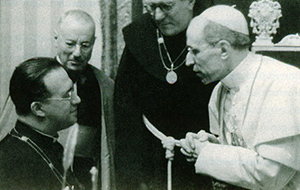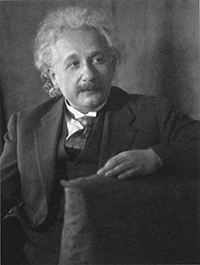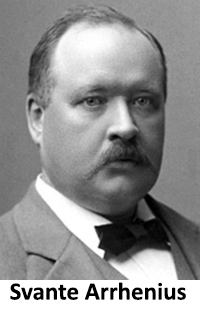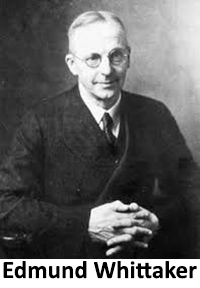The Pius XII - Lemaître Affair (1951-1952) on Big Bang and Creation
by Giuseppe Tanzella-Nitti
Full professor of Fundamental Theology, Pontifical University of the Holy Cross, Rome.

One of the themes attracting public attention on the occasion of the 50th anniversary of the death of Georges Lemaître (1894-1966), a Belgian priest and cosmologist, involves his relationship with Pius XII in proposing a supposed link between the expansion of the universe hypothesis (Big Bang) – of which Lemaître was one of the first theorists – and the possibility to produce “scientific” evidence of the existence of God. According to a widely circulated version of events today, Pius XII supposedly claimed in a discussion held at the Pontifical Academy of Sciences in November 1951 that the recent astronomical discoveries confirmed the initial page of the Book of Genesis when the latter describes the creation of the universe as a Fiat lux. In essence, science, according to the Pontiff’s judgment, in those years was providing evidence for the existence of God. In a personal meeting expressly requested a short time later, Lemaître supposedly corrected the Pontiff on his errors, telling him he was mistaken in making “concordist” comments on science and Holy Scripture.
Thus described, the episode matches well with the vivacious personality of Msgr. Lemaître, since the Belgian cosmologist had already on a previous occasion also “corrected” Albert Einstein, pointing out that the general relativity field equations, which described the universe in its entirety and which the German physicist believed should only be applied to a static universe, actually better described an expanding universe. Einstein did not initially accept Lemaître’s point of view and introduced a parameter ad hoc into the equations (the term λ) precisely to “balance” this expansion, having to change his mind later and confess to having made the biggest mistake of his life on that occasion. Who is this breezy, confident Monsignor-cosmologist able, within the span of a few short years, to correct the father of Relativity and a Pontiff of the Catholic Church in one fell swoop? But, we also ask, in view of the relationship between Lemaître and Pius XII, did things really go just as they are recounted and we have summarily recalled here, or are there deeper interpretations that should not be overlooked?
The idea of recommending to a Pope to keep science clearly distinct from faith, the nature of the physical universe from the possibility that this has a Creator, today meets with the favor of the greater part of public opinion: in order to get along with each other, science and faith essentially have to occupy themselves with completely different things. This position, widely circulated, is also described with a provoking acronym, introduced by the late evolutionary biologist Steven J. Gould: NOMA, Non-Overlapping Magisteria. Science and Christian theology are supposedly two teachings completely separated, without any possibility of overlap. Reminding a Pontiff not to confuse the two would be therefore a particularly opportune recommendation. We will try then to briefly reconstruct the facts, proposing again at the end to return to Gould’s thesis, asking ourselves if it is really satisfactory or if, instead, there are some weak points.
 On
November 22, 1951, Pius XII received the members of the Pontifical
Academy of Sciences, re-founded in 1936 by Pius XI after the events
related to the unification of Italy had made it merge with the tradition
of the “Accademia dei Lincei” (Academy of the Lynxes). A week of study
devoted to seismology, in particular to the detection of microseisms,
held in the seat of the Academy in the Vatican Gardens provides the
occasion for the pontifical academicians’ meeting. At the time Father
Agostino Gemelli was the president of the Pontifical Academy. Georges
Lemaître was also an academician, but he was not present at that meeting
because of other scientific engagements (he later became President of
the Academy from 1960 to 1966, upon the death of Fr. Agostino Gemelli).
The text in English of the papal address to the academicians during this
meeting is published in the Collection of Papal Addresses to the Pontifical Academies edited by Marcelo Sánchez Sorondo, Chancelor of the Pontifical Academy of Sciences (Papal Addresses, Pontificiae Academiae Scientiarum Scripta Varia, n. 100, LEV, Vatican City 2003, pp. 130-142). The full text of the address is online on the Inters website.
The subject matter of Pope’s discourse, which is worth recalling, is in
this context a teaching of circumstantial value, as happens in analog
situations, is to comment on the philosophical proofs of the
existence of God, summarized in the famous “five ways” of Thomas
Aquinas. The adjective “philosophical” and not “scientific” is, as one
will see, quite important here. The references to science offered by the
Pontiff have a heuristic and informative value in this discourse. As
the enthusiast and admirer of scientific research that he was, Pius XII
lingers on the descriptions of recent results in the fields of physics,
biology, chemistry and cosmology. It is probable that one of the
academicians, Edmund Whittaker (1873-1956), an English
physicist-mathematician already advanced in years and interested in the
relationship between science and faith, prepared part of the draft of
the speech.
On
November 22, 1951, Pius XII received the members of the Pontifical
Academy of Sciences, re-founded in 1936 by Pius XI after the events
related to the unification of Italy had made it merge with the tradition
of the “Accademia dei Lincei” (Academy of the Lynxes). A week of study
devoted to seismology, in particular to the detection of microseisms,
held in the seat of the Academy in the Vatican Gardens provides the
occasion for the pontifical academicians’ meeting. At the time Father
Agostino Gemelli was the president of the Pontifical Academy. Georges
Lemaître was also an academician, but he was not present at that meeting
because of other scientific engagements (he later became President of
the Academy from 1960 to 1966, upon the death of Fr. Agostino Gemelli).
The text in English of the papal address to the academicians during this
meeting is published in the Collection of Papal Addresses to the Pontifical Academies edited by Marcelo Sánchez Sorondo, Chancelor of the Pontifical Academy of Sciences (Papal Addresses, Pontificiae Academiae Scientiarum Scripta Varia, n. 100, LEV, Vatican City 2003, pp. 130-142). The full text of the address is online on the Inters website.
The subject matter of Pope’s discourse, which is worth recalling, is in
this context a teaching of circumstantial value, as happens in analog
situations, is to comment on the philosophical proofs of the
existence of God, summarized in the famous “five ways” of Thomas
Aquinas. The adjective “philosophical” and not “scientific” is, as one
will see, quite important here. The references to science offered by the
Pontiff have a heuristic and informative value in this discourse. As
the enthusiast and admirer of scientific research that he was, Pius XII
lingers on the descriptions of recent results in the fields of physics,
biology, chemistry and cosmology. It is probable that one of the
academicians, Edmund Whittaker (1873-1956), an English
physicist-mathematician already advanced in years and interested in the
relationship between science and faith, prepared part of the draft of
the speech.
In his address, Pius XII proposes examining if the modern scientific understanding of the cosmos would now be called to correct or perfect some of the Thomist ways of proving God’s existence in their aspects that intercept the physical order, focusing especially on the ways of contingency (3rd way) and finality (5th way). The text, as one can easily verify, focuses on the idea that we are in a universe in constant transformation and whose order seems to indicate, at the philosophical level, the existence of a finality. Contingency and finality, claims Pius XII, are two concepts that science does not deny and which can therefore be used in philosophical arguments that are also meaningful for scientists. Are there references to the Big Bang, the creation of the universe and the Book of Genesis in the text? There are references, but it is worth reading them carefully.
We are in the year 1951; it is worth remembering: at the time they only had results related to the distance-velocity law for the expansion of galaxies, not even measurements of the cosmic background radiation obtained for the first time in 1964. Inquiring about the nature of the original “substance” from which all things began, Pius XII affirms: “One waits in vain for an answer from natural science, which honestly declares that this is an insoluble enigma. It is true that this is asking too much of natural science as such; but it is also true that the human spirit versed in philosophical speculation is able to penetrate the problem more profoundly.” The problem of the root origin of the universe, therefore, is a philosophical problem, not a scientific one. The address proceeds now with a step that concerns us closely. The Pope claims that a personal subject, a mind now enriched by scientific knowledge, would deem the present view of the universe compatible with the idea of a creation of the universe from nothing on the part of a Creator God. Subject to this recognition – it is worth emphasizing – is neither science nor its scientific method, but man enriched by scientific knowledge together with his philosophical and existential reflections. These are the words of Pius XII: “It is undeniable that a mind illuminated and enriched by modern scientific knowledge, which calmly evaluates this problem, is led to break the circle of a matter preconceived as completely independent and autonomous – either because uncreated or self-created – and to acknowledge a Creative Spirit. With the same clear and critical gaze with which he examines and judges facts, he also catches sight of and recognizes the work of the omnipotent Creator, Whose power, aroused by the mighty ‘fiat’ pronounced billions of years ago by the Creative Spirit, unfolded itself in the universe and, with a gesture of generous love, called into existence matter, fraught with energy. Indeed, it seems that the science of today, by going back in one leap millions of centuries, has succeeded in being a witness to that primordial Fiat Lux, when, out of nothing, there burst forth with matter a sea of light and radiation, while the particles of chemical elements split and reunited in millions of galaxies.” The language is rhetorical and exalts science’s ability to go back in time to the point of being an ideal “witness” of a fiat lux. Frankly we do not believe he is speaking, as is believed a bit hastily, about some “scientific demonstration of the existence of God.” He speaks instead about consonance, meaning the fact that what science discovers does not seem to deny what faith affirms.
 After
the informative and philosophical scientific exposition, Pius XII’s
speech, already in its closing phase, introduces three literary
quotations involving popular works of three scientists. Here the theme
becomes more intriguing. Of the three scientists Ludwig Plate, Svante
Arrehnius and Edmund Whittaker, only the last was an academician, as we
already mentioned. The first two quotations, those from Plate and
Arrehnius, assert that science denies the plausibility of the theological
idea of a creation from nothing. Pius XII does not judge these
assertions (we could say today they judge themselves), but mentions them
for rhetorical purposes, in order to introduce the third quotation,
that from Whittaker, dealing with one of his philosophical meditations
on the cosmos entitled Space and Spirit (1946), which says: “These different estimates converge to the conclusion that there was an epoch about 109 or 1010
years ago, on the further side of which the cosmos, if it existed at
all, existed in some form totally unlike anything known to us: so that
it represents the ultimate limit of science. We may perhaps without
impropriety refer to it as the Creation. It supplies a concordant
background to the view of the world which is suggested by the geological
evidence, that every organism ever existent on the earth has had a
beginning in time.” The language is suggestive, but epistemologically
weak, like that of his former colleagues, for reasons diametrically
opposing. If science is not competent to judge the truth of the
philosophical-theological idea of creation from nothing (science works
by definition on what is physically measurable and not what is
metaphysical), it is also not competent to establish the absolute origin
of time. This is a philosophical error, as well as a physical one.
Theology and Genesis do not have any place here. A good physicist knows
that it is not possible to establish the origin of time from within time
itself because it would encounter problems of logical incompleteness.
The quotation from Edmund Whittaker, a scientist not a theologian or
pontiff, is certainly a weak point in Pius XII’s speech, not because it
is directly “concordist”, but because it could have been (and could be
today) interpreted as such.
After
the informative and philosophical scientific exposition, Pius XII’s
speech, already in its closing phase, introduces three literary
quotations involving popular works of three scientists. Here the theme
becomes more intriguing. Of the three scientists Ludwig Plate, Svante
Arrehnius and Edmund Whittaker, only the last was an academician, as we
already mentioned. The first two quotations, those from Plate and
Arrehnius, assert that science denies the plausibility of the theological
idea of a creation from nothing. Pius XII does not judge these
assertions (we could say today they judge themselves), but mentions them
for rhetorical purposes, in order to introduce the third quotation,
that from Whittaker, dealing with one of his philosophical meditations
on the cosmos entitled Space and Spirit (1946), which says: “These different estimates converge to the conclusion that there was an epoch about 109 or 1010
years ago, on the further side of which the cosmos, if it existed at
all, existed in some form totally unlike anything known to us: so that
it represents the ultimate limit of science. We may perhaps without
impropriety refer to it as the Creation. It supplies a concordant
background to the view of the world which is suggested by the geological
evidence, that every organism ever existent on the earth has had a
beginning in time.” The language is suggestive, but epistemologically
weak, like that of his former colleagues, for reasons diametrically
opposing. If science is not competent to judge the truth of the
philosophical-theological idea of creation from nothing (science works
by definition on what is physically measurable and not what is
metaphysical), it is also not competent to establish the absolute origin
of time. This is a philosophical error, as well as a physical one.
Theology and Genesis do not have any place here. A good physicist knows
that it is not possible to establish the origin of time from within time
itself because it would encounter problems of logical incompleteness.
The quotation from Edmund Whittaker, a scientist not a theologian or
pontiff, is certainly a weak point in Pius XII’s speech, not because it
is directly “concordist”, but because it could have been (and could be
today) interpreted as such.
 It
is at this point that the priest-cosmologist Georges Lemaître comes
into play. We know that he requested and obtained a meeting with Pius
XII, in anticipation of a new speech that the Pontiff would hold in Rome
in September 1952 on the occasion of an Assembly of the International
Astronomical Union (IAU), of which Lemaître was a member. In this
circumstance, the cosmological issue would have been even more current
than in the Pontifical Academy of Sciences’ week of study devoted to
microseisms.
It
is at this point that the priest-cosmologist Georges Lemaître comes
into play. We know that he requested and obtained a meeting with Pius
XII, in anticipation of a new speech that the Pontiff would hold in Rome
in September 1952 on the occasion of an Assembly of the International
Astronomical Union (IAU), of which Lemaître was a member. In this
circumstance, the cosmological issue would have been even more current
than in the Pontifical Academy of Sciences’ week of study devoted to
microseisms.
To this day we do not have any explicit written evidence about the
meeting – possible thanks to the intervention of P. Daniel O’Connell of
the Vatican Observatory and Msgr. Angelo Dell’Acqua who worked for the
Secretary of State – in possession, and therefore we do not know what
the two may have spoken about. It is logical to think that the Belgian
scientist and academician wanted to closely review the address of the
Holy Father to the Assembly of IAU, and it is also logical that he would
have offered some suggestions. Were there criticisms of the citations
of the colleagues Whittaker, Plate and Arrehnius? Were there criticisms
of the Pontiff himself? Everyone can think whatever he wants since there
is no historical evidence on the contents of the meeting and we can
only make reasonable predictions. What belongs to history is instead the
text of the speech held at Castel Gandolfo on September 7, 1952 before
the members of the International Astronomical Union. If one examines
this speech, much shorter than the previous one, textual quotations from
men of science do not appear, though typical on these occasions.  In
Pius XII’s new speech anyone can grasp well the underlying idea:
science progresses with great strides, but it will never be able to
respond to the final question about the origin of all things. Here is a
passage of the Pope that sums up the sense of his speech: “Will the
path, undertaken by the spirit of man, which so far has been to his
undisputed honor, later be open indefinitely to him and followed
incessantly until the last mystery the universe has in store is solved?
Or, on the contrary, is the mystery of nature so vast and hidden that
the human spirit, for its intrinsic limitations and disproportions will
never fathom it entirely? The answer of robust minds that have
penetrated more deeply into the secrets of the cosmos, is rather modest
and reserved. We are, they think, at the beginning; much ground remains
to cover and it will be covered tirelessly; however, is there not some
chance that even the most brilliant investigator will never be able to
know, or even less to solve, all the mysteries contained within the
physical universe?”
In
Pius XII’s new speech anyone can grasp well the underlying idea:
science progresses with great strides, but it will never be able to
respond to the final question about the origin of all things. Here is a
passage of the Pope that sums up the sense of his speech: “Will the
path, undertaken by the spirit of man, which so far has been to his
undisputed honor, later be open indefinitely to him and followed
incessantly until the last mystery the universe has in store is solved?
Or, on the contrary, is the mystery of nature so vast and hidden that
the human spirit, for its intrinsic limitations and disproportions will
never fathom it entirely? The answer of robust minds that have
penetrated more deeply into the secrets of the cosmos, is rather modest
and reserved. We are, they think, at the beginning; much ground remains
to cover and it will be covered tirelessly; however, is there not some
chance that even the most brilliant investigator will never be able to
know, or even less to solve, all the mysteries contained within the
physical universe?”
What conclusions can we draw from this reconstruction of the facts? It is plausible that Georges Lemaître spoke with Pius XII regarding the November 1951 speech and that he offered the Pontiff some clarifications. Did these clarifications consist in a true and proper criticism of Pius XII, a reproof for the mistakes he made in the previous address? And what would these mistakes be essentially? On closer inspection, it appears that the clarifications of Lemaître, paradoxically, must have been more oriented towards preventing the trespassing of science in theology – as could have resulted from the citations of Whittaker, Arrhenius and Plate – which does not prevent, as is commonly believed, the interference of theology or Popes in science. Beyond this event’s occurrence and its possible interpretations, the necessity remains, in our opinion, to create the conditions for which not only men of science know how to speak with a more correct use of language on philosophical topics, but also theologians know how to speak with greater competence on scientific topics. It is the hope that John Paul II addressed to the director of the Vatican Observatory, George Coyne, in a letter sent to him on June 1, 1988. “It would entail,” wrote John Paul II, “that some theologians, at least, should be sufficiently well-versed in the sciences to make authentic and creative use of the resources that the best-established theories may offer them. Such an expertise would prevent them from making uncritical and overhasty use for apologetic purposes of such recent theories as that of the "Big Bang" in cosmology. Yet it would equally keep them from discounting altogether the potential relevance of such theories to the deepening of understanding in traditional areas of theological inquiry.” Both implications are important and both sides of the dialogue are necessary.
One last reflection concerns the mindset, common today, of having to support a strict separation between scientific and religious world views, as required by the strict application of the NOMA principle mentioned earlier. There is no doubt that from the point of view of the method and arguments to be carried out, natural sciences is one thing, and philosophy is another, and theology is another still. However, scientific research itself, as early as the twentieth century – in view of a broadening of its horizon and object of investigation – is partially modifying its own method in order to be able to rigorously confront questions that until recently were considered purely philosophical and strictly logical-metaphysical. Just think of the problems arising from the ‘crisis of reductionism,’ the ‘complexity’ in the physical and biological fields, and the ‘theory of foundations’ of logical-mathematical sciences. Do not forget, then, that the human being is one and indivisible, and those who study the universe can legitimately believe it was created by God without contravening any requirement of the scientific method. The phrase often heard (and repeated), “science must be atheist,” it is at least improper. Only human beings can be atheists, not a method. If a scientist, observing the beauty of the universe, its order, its transformations and its contingency, wanted to deduce the existence of a Creator, he must be able to do it and be able to support it even in talking to his colleagues because he is a human being and not a computer acting alone, always using algorithms applied to measurable observables. He must be free to let his religious outlook on the world affect his way of doing science, the reasons that motivate him, and the passion that animates him. The history of science teaches us that there have been these reciprocal influences and that they have been very fruitful.
Comments